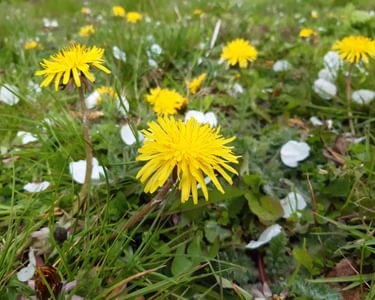Members' Experiments
Are our weeds attracting more beneficial insects than cultivated plants?

There have been a number of studies that show some of our common weeds such as dandelion and ragwort make a vital contribution to supporting beneficial insects.
We wanted to see how well this could translate into a garden setting over the period of a year, so that gardeners would have a better understanding of some of the benefits brought about by common weeds.
The research question evolved from a series of meetings of a citizen science action group, comprising of a mixture of researchers, community gardeners and private gardeners. A ‘menu’ of common weeds and cultivated plants was given to the participants and they monitored the flowering and the insects visiting these plants. The key points that we learned were:
1. A small number of comitted individuals made a total of 1696 counts on the plants!
2. Although the cultivated plants generally attracted more insects than the weeds, the weeds filled a very important niche of supplying pollen and nectar in early spring. A good food source at this time is vital for insects that are building nests.
3. Most of the weeds attracting insects were those found in lawns such as dandelions, daisies, clover and self-heal. Adapting a more relaxed mowing regime is an easy step people can take to boost biodiversity without needing to let their gardens become messy.
4. This was an experiment that required taking detailed counts over a longer period of time. It is difficult to maintain commitment over such an extended period. The poor weather in 2023 also meant that people were not finding many insects on their plants, so this was a further demotivating factor that meant many people gave up.
5. A survey of attitudes to weeds achieved a total of 287 responses, which will be presented in a separate report.